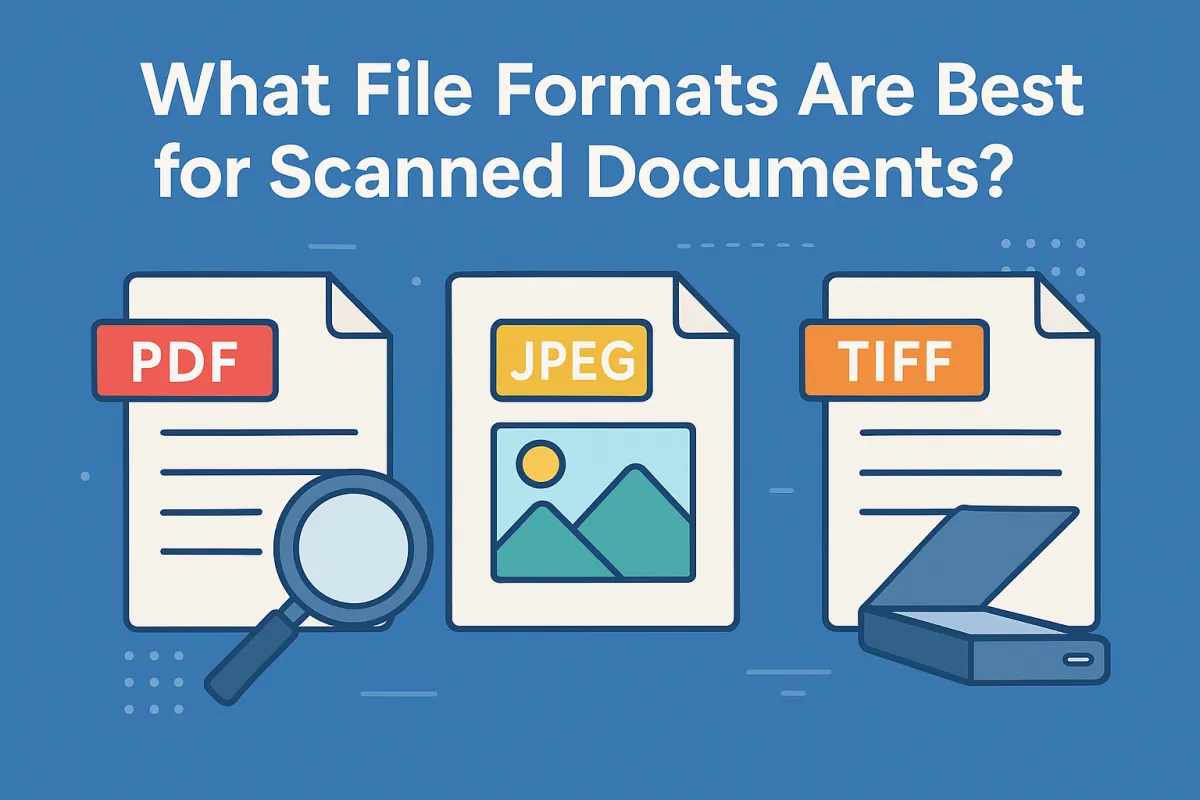
What File Formats Are Best for Scanned Documents? PDF, TIFF, JPEG Explained
By: USA IMAGING, Inc.
When scanning paper documents or photos, choosing the right file format matters just as much as resolution or equipment.
Each format—PDF, TIFF, and JPEG—offers different strengths depending on how you plan to store, share, search, or archive your files. Some are ideal for long-term preservation. Others are perfect for email or quick access.
Here’s a side-by-side breakdown to help you decide what’s best for your needs.
📄 PDF – The Most Versatile Format
Best For: Multi-page documents, searchable text, business use
Pros:
Supports multi-page files (e.g., contracts, reports)
Can include OCR for searchable text
Easy to open on any device without special software
Small file size when compressed
Cons:
Not ideal for photo archiving
Edits require PDF-specific tools
Some compression settings can degrade quality
Ideal Uses: Legal files, tax records, HR documents, school records, contracts
🖼️ JPEG – Best for Photos and Casual Use
Best For: Photographs, casual sharing, web use
Pros:
Small file size—easy to email or upload
Universally compatible across devices
Fast to scan and open
Cons:
Lossy compression: each save can reduce quality
Not ideal for detailed text or archival purposes
No multi-page support (one image per file)
Ideal Uses: Family photos, social media sharing, personal albums
🧾 TIFF – The Archival Gold Standard
Best For: Long-term storage, image fidelity, professional archives
Pros:
Lossless quality—no degradation
Excellent for both documents and photos
Widely accepted for archiving and preservation
Compatible with OCR and metadata embedding
Cons:
Large file size
Not as user-friendly for casual users
Limited mobile or browser support
Ideal Uses: Historical documents, master scans, government or museum archives
🗂️ Side-by-Side Comparison Chart

🔍 What Format Does USA Imaging Recommend?
We tailor the format to your specific needs:
PDF for searchable business documents
TIFF for archival projects and high-fidelity records
JPEG for scanning loose photos or slides
We also offer file conversions, OCR, and file splitting or merging services
Not sure what you need? We’ll guide you based on your project type, volume, and usage goals.
📞 Need Help Choosing the Right Format?
Whether you’re scanning for compliance, convenience, or preservation—we’ll make sure your files are delivered in the most useful format possible.
Call USA Imaging at (858) 513-6565
Email: [email protected]
or Request a Quote to discuss your scanning project today.
